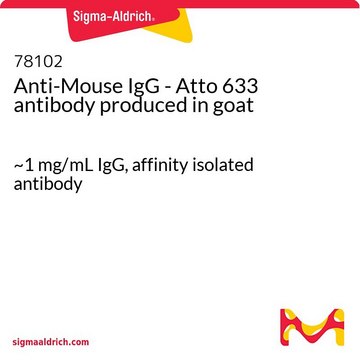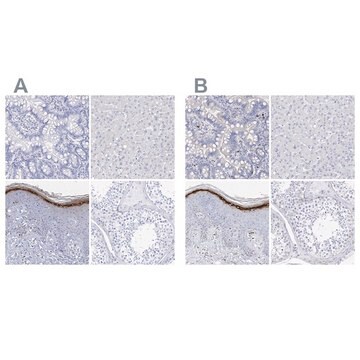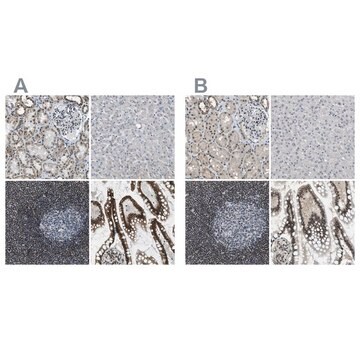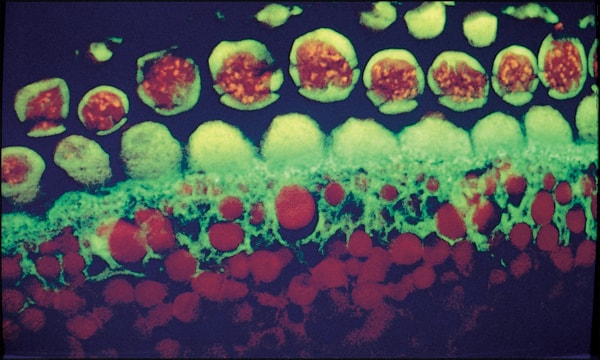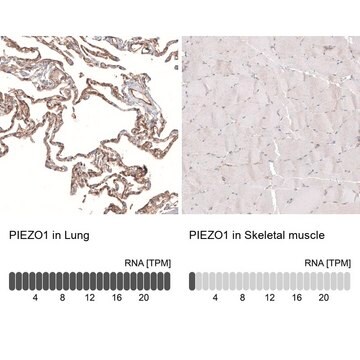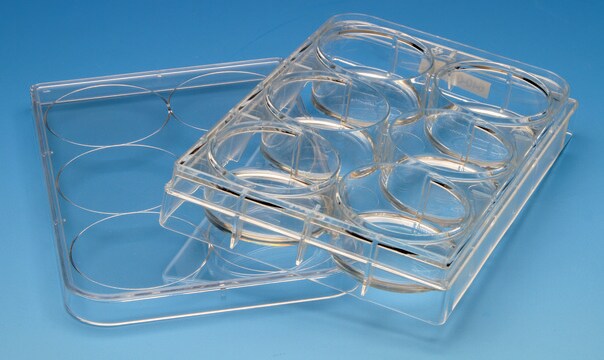50283
Anti-Mouse IgG - Atto 655 antibody produced in goat
~1 mg/mL IgG
Sinónimos:
Atto 655 [goat Anti-mouse IgG]
About This Item
Productos recomendados
biological source
goat
recombinant
expressed in HEK 293 cells
conjugate
Atto 655 conjugate
antibody form
affinity isolated antibody
antibody product type
secondary antibodies
clone
polyclonal
contains
50% glycerol
species reactivity
mouse
concentration
~1 mg/mL IgG
technique(s)
immunofluorescence: suitable
fluorescence
λex 655 nm; λem 677 nm in PBS
shipped in
wet ice
storage temp.
−20°C
target post-translational modification
unmodified
General description
Immunogen
Application
Packaging
Analysis Note
Disclaimer
¿No encuentra el producto adecuado?
Pruebe nuestro Herramienta de selección de productos.
signalword
Warning
hcodes
pcodes
Hazard Classifications
Eye Irrit. 2
Storage Class
10 - Combustible liquids
wgk_germany
WGK 3
flash_point_f
Not applicable
flash_point_c
Not applicable
ppe
Eyeshields, Gloves
Certificados de análisis (COA)
Busque Certificados de análisis (COA) introduciendo el número de lote del producto. Los números de lote se encuentran en la etiqueta del producto después de las palabras «Lot» o «Batch»
¿Ya tiene este producto?
Encuentre la documentación para los productos que ha comprado recientemente en la Biblioteca de documentos.
Artículos
Immunoblotting (Western blot transfer) is a common technique in modern proteomics research.
Nuestro equipo de científicos tiene experiencia en todas las áreas de investigación: Ciencias de la vida, Ciencia de los materiales, Síntesis química, Cromatografía, Analítica y muchas otras.
Póngase en contacto con el Servicio técnico